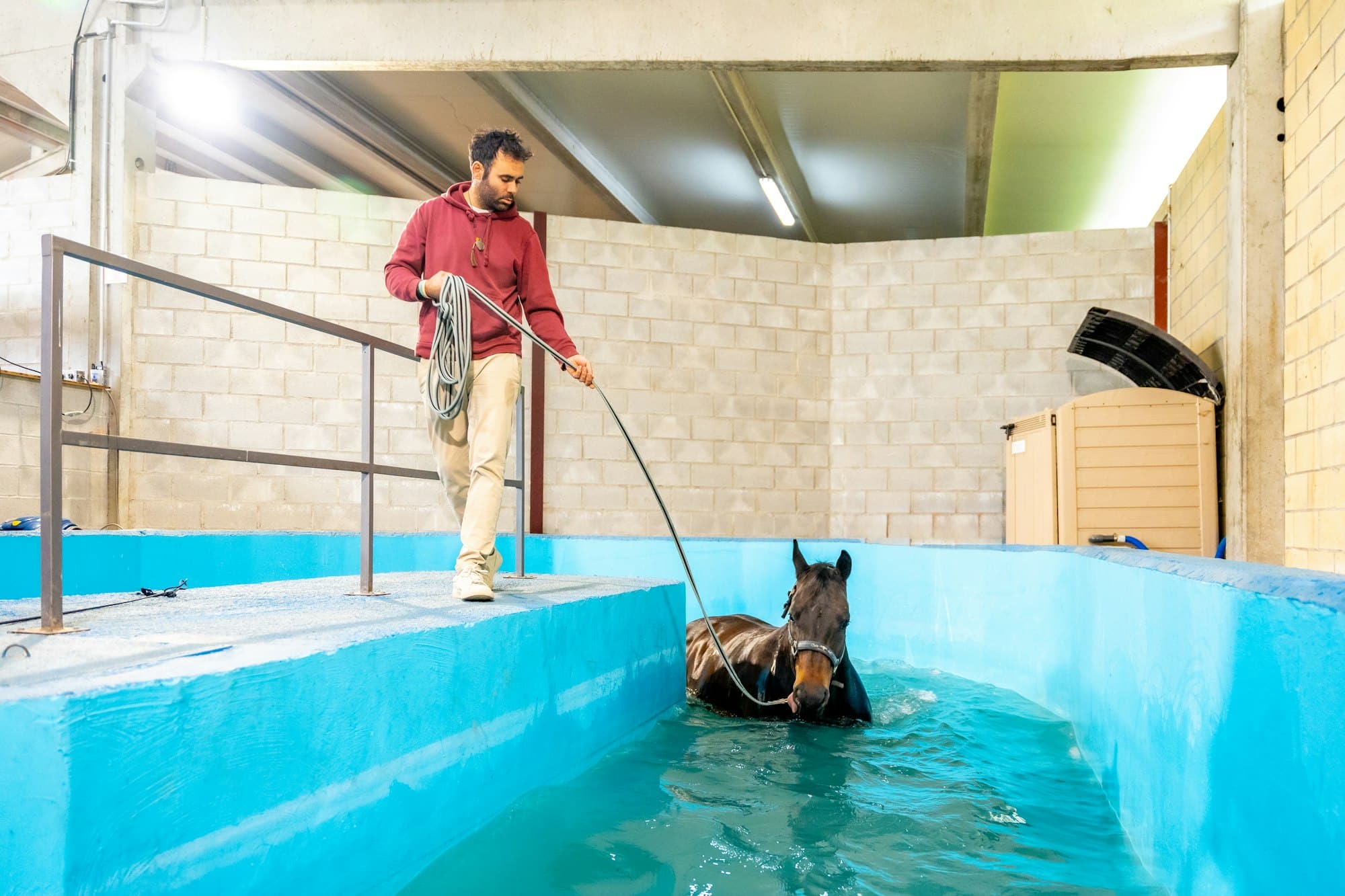How Can Aquatic Therapy Benefit Post-ACL Surgery Recovery for Basketball Players?

In the world of professional sports, a healthy athlete is a performing athlete. Every competitive sportsman and woman knows that an injury can be a major setback, both physically and mentally. In particular, an anterior cruciate ligament (ACL) injury can be debilitating and take months, if not years, to fully recover from. Following an ACL surgery, it’s crucial to seek out the most effective and efficient rehabilitation methods to ensure a successful return to the game. One such therapy that has been gaining traction in the sports world is aquatic therapy or hydrotherapy. This article will delve into the benefits of aquatic therapy for basketball players recovering from ACL surgery.
The Importance of the ACL and the Impact of its Injury
The anterior cruciate ligament, known commonly as the ACL, is a key stabilizer in the knee joint. It’s responsible for preventing the shin bone from sliding out in front of the thigh bone. When you hear about a basketball player suffering a knee injury, there’s a good chance it’s an ACL tear. This can happen when the athlete abruptly stops or changes direction, and it’s as painful as it is debilitating.
En parallèle : How Can Custom-Fit Mouthguards Reduce Concussion Risks in High School Football?
Following an ACL tear, surgery is often required, especially for athletes who wish to return to their sports. The surgery itself is only the first step in a long recovery process. After the surgery, patients will need to undergo extensive physical therapy. One of the emerging trends in physical therapy for ACL recovery is aquatic therapy.
Aquatic Therapy: A Deep Dive
Aquatic therapy, also known as water-based therapy or hydrotherapy, is a form of physical therapy that takes place in a pool. Aquatic therapy utilizes the unique properties of water — such as buoyancy and resistance — to create a therapeutic environment that can help expedite the recovery process.
Lire également : What’s the Impact of Altitude Training on Red Blood Cell Production in Elite Runners?
The physical properties of water can be leveraged in various ways to help athletes regain strength and mobility in their knees post-ACL surgery. The buoyancy of water reduces the weight-bearing stress on the knees, which allows for easier and less painful movements. The viscosity of water provides resistance, which can aid in strength training without the need for heavy weights.
Rehabilitation Through Aquatic Therapy
Aquatic therapy can provide a multitude of benefits for those recovering from ACL surgery. The environment allows for a gradual increase in intensity and difficulty, making it an ideal form of rehabilitation for basketball players who need to regain their strength and agility.
The buoyancy of water allows for a decreased load on the recovering knee, enabling patients to perform exercises that they may not be able to do on land due to pain. This means that patients can begin their rehabilitation earlier, which may lead to a quicker return to the court.
Moreover, the water provides a safe and controlled environment for athletes to retrain their knee joint without the fear of falling or re-injury. This can significantly aid in their psychological recovery, giving them the confidence to push their limits and regain full use of their knee.
Strength Training in Water
Strength training is a critical part of any rehabilitation process, and this is no different for basketball players recovering from an ACL surgery. Thanks to the resistance provided by water, aquatic therapy can effectively help athletes to regain their strength.
A wide variety of exercises can be performed in water that will help to build strength in the legs and core. Squats, lunges, and leg lifts are just a few examples of strength exercises that can be done safely and effectively in a pool. These exercises are crucial in getting athletes ready for their return to the court.
The water can also be used to create an unstable environment, which is perfect for improving balance and proprioception — the body’s ability to sense its position and movement in space. This is particularly important for basketball players who need to regain their agility and quickness on the court.
Preparing for a Successful Return to the Court
Of course, the ultimate goal of any rehabilitation program is to prepare the athlete for a successful return to their sport. Aquatic therapy can play a pivotal role in this process.
The progressive nature of aquatic therapy allows for a gradual increase in the intensity and complexity of exercises, preparing athletes for the demands of their sport. The controlled environment also fosters a safe space for athletes to practice sport-specific movements, such as jumping and landing, which are crucial skills for basketball players.
In conclusion, while an ACL injury is a significant setback for any athlete, the road to recovery doesn’t have to be a daunting one. With the appropriate rehabilitation program, which may include aquatic therapy, athletes can look forward to a successful recovery and an eventual return to the court.
The Role of the Physical Therapist in the Rehabilitation Process
In implementing an effective rehabilitation process, a well-trained physical therapist plays a crucial role. In the context of ACL recovery, the physical therapist designs and supervises a program tailored specifically to the athlete’s needs, based on their sport, position, and personal goals. A central component of this could be aquatic therapy.
Aquatic therapy is often directed by a physical therapist who has a deep understanding of the athlete’s injury, the surgery performed, and the demands of the sport they will return to. The physical therapist will devise a range of motion exercises and strength-building workouts which can be performed underwater, leveraging the properties of water to speed up the recovery process.
Sometimes, advanced techniques are used in aquatic therapy such as underwater treadmill training. This method, documented in numerous PMC free articles and Google Scholar studies, allows the athlete to walk or run underwater, providing a low-impact but effective way of regaining strength and endurance.
Physical therapists also monitor the athlete’s progress and adjust the rehabilitation program as necessary. They ensure that each stage of the recovery is achieved before moving on to the next, minimizing the risk of re-injury while maximizing the athlete’s potential for a successful return to sport.
The Evidence: Aquatic Therapy and ACL Recovery in Sports Medicine
In the field of sports medicine, numerous studies have been published supporting the benefits of aquatic therapy for post-ACL surgery recovery. These articles, available on platforms like PubMed, have documented increases in range of motion, strength, and functional ability in patients who have undergone aquatic therapy.
One promising area of research concerns the use of an underwater treadmill. In one study, athletes who used an underwater treadmill after ACL surgery demonstrated improved single-leg balance and exhibited a closer return to their pre-injury gait patterns compared to those who only performed land-based exercises.
In addition to these physical gains, some research suggests that the unique environment provided by aquatic therapy may offer psychological benefits. The water’s buoyancy and resistance can help athletes regain confidence in their injured knee, reducing fear of re-injury that can be a significant barrier in the recovery process.
Further research is continuously being conducted in this area, with findings regularly updated in sports medicine journals. The growing body of evidence suggests that aquatic therapy, when used as a part of a comprehensive rehabilitation program, can significantly aid in the recovery process after an ACL injury.
Conclusion
In conclusion, the road to recovery following an ACL injury can be a long and challenging one. However, with the right approach and guidance from professionals in physical therapy and sports medicine, it is possible to come back stronger and more resilient.
Aquatic therapy, as part of a comprehensive rehabilitation program, can offer many benefits. From the initial stages of recovery, where reduced weight-bearing exercises can help restore range of motion, to the later stages, where water resistance can facilitate strength training, aquatic therapy is an effective tool for healing and conditioning.
Moreover, considering the growing body of evidence documented in sports medicine research, the use of aquatic therapy can be a game-changer in the recovery process. By implementing this innovative approach, athletes can look forward to reducing their recovery time and confidently making a successful return to their sport.
As they embark on this journey, basketball players recovering from ACL surgery should remember that the process, while challenging, is not insurmountable. With dedication, patience, and the right resources, a successful return to the court is not just possible, but likely.
